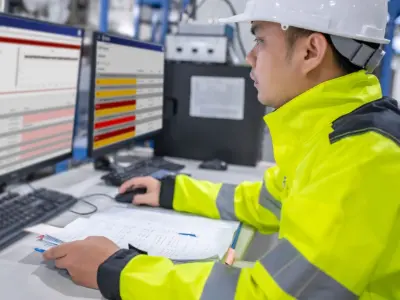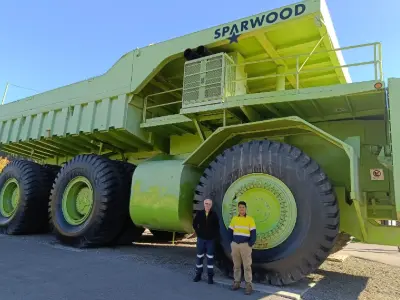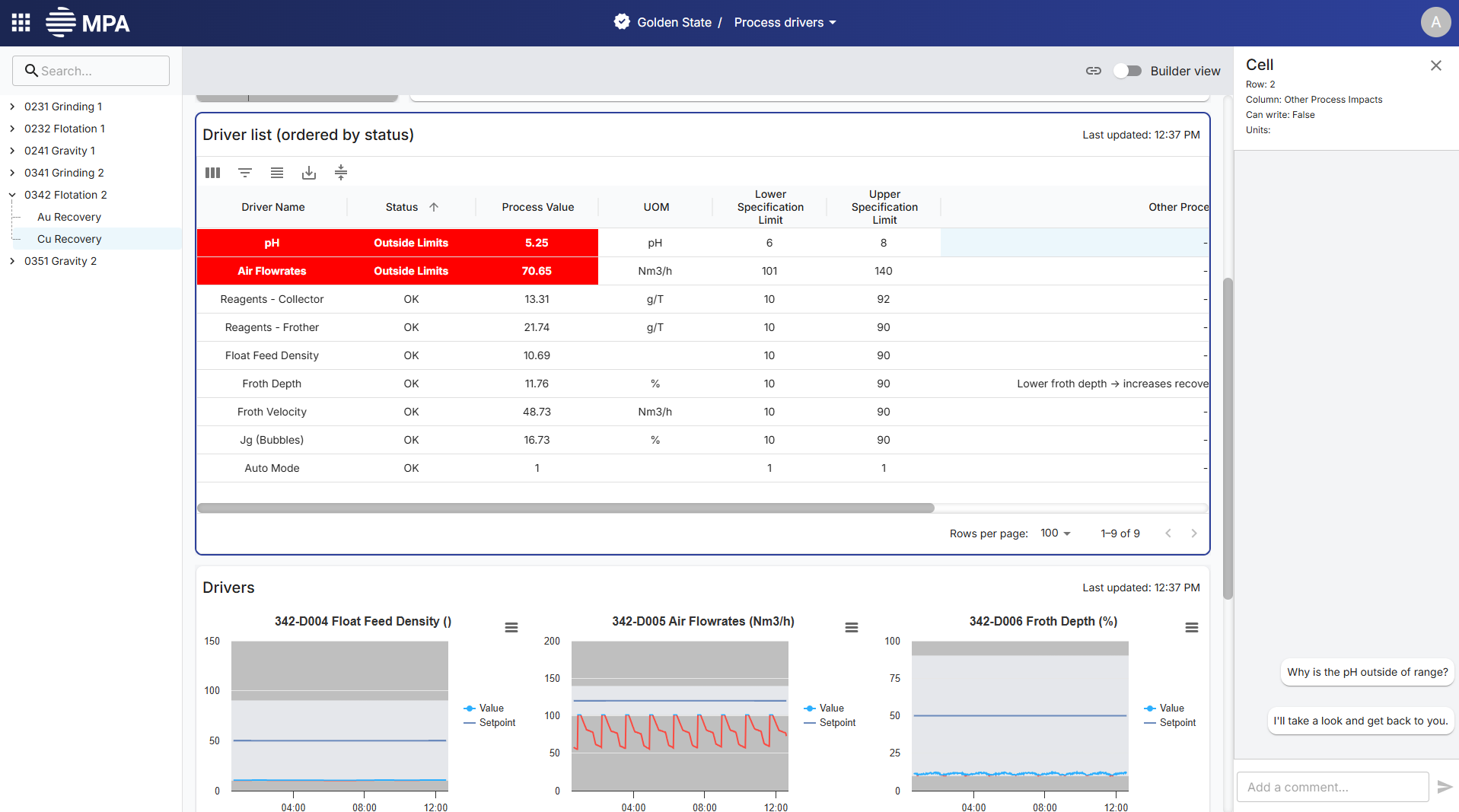In mining, getting the basics right delivers the most value. This is true in all areas of operations, but especially in mineral process plants where every unplanned failure counts.
Plant operators are under mounting pressure to recover more while keeping costs down. That’s why plant digitalisation has shifted from being a ‘nice to have’ to a ‘must have’ in any modern process plant.
In the past, it might have been acceptable to manage control systems in manual mode or make decisions based on data from a few days ago. In 2025, you need visibility over all aspects of your plant to get better data and make better decisions.
So what does a fully digital plant look like? And how do you get there?
In this article, we discuss what digital maturity looks like, then we outline a vision for a fully digital plant, and a practical roadmap to achieve it.
The automation pyramid and levels of digital maturity
To begin the journey towards digitalisation, it helps to visualise the automation pyramid and the five levels of digital maturity:
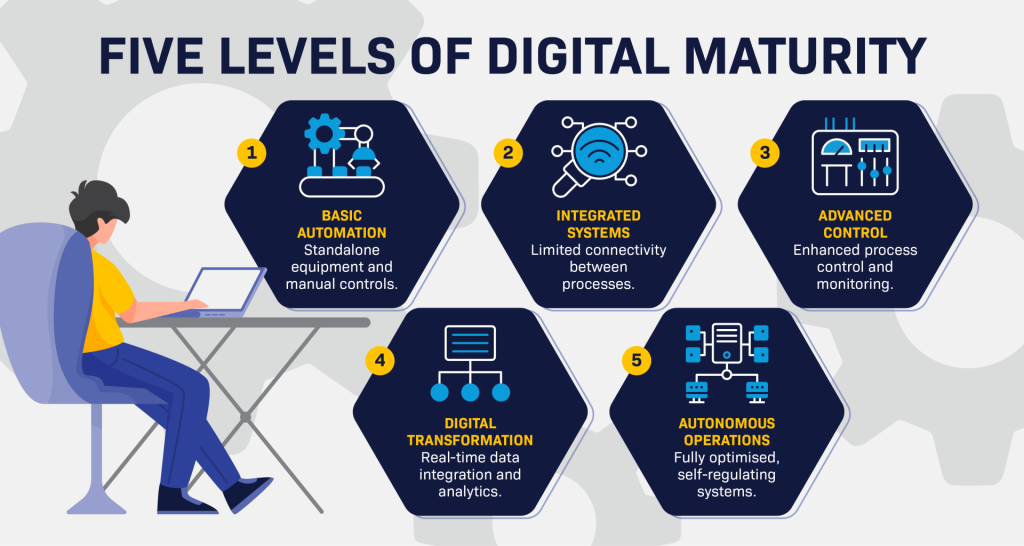
- Basic automation: Standalone equipment and manual controls.
- Integrated systems: Limited connectivity between processes.
- Advanced control: Enhanced process control and monitoring.
- Digital transformation: Real-time data integration and analytics.
- Autonomous operations: Fully optimised, self-regulating systems.
You start at level one and work your way up as you address the priorities at each stage. Not every site can reach fully autonomous operations, but each step of the digital transformation journey will add value and improve plant performance.
The crucial first step is to identify which level your plant is at right now. Then, you can plan to make improvements and work towards a fully digital plant over the next few years.
Daniel Qiao, Lead Systems Engineer at Mipac, says it’s important to remember that people and technology need to work together when it comes to plant digitalisation.
“Unless you’ve got the people and processes in there to act on that data, you can present all the data you want but it won’t deliver the outcomes you need.”
That’s why it’s worth spending time at the start of your digitalisation journey to build the right foundations — and that includes bringing people along for the journey along with systems and processes.
3 initial challenges to overcome
1. Resistance to change
One of the biggest hurdles is user resistance to adopting new software. Training, communication, and incentives—such as tying project success to performance bonuses—can encourage adoption. Demonstrate how new systems simplify workflows to also boost buy-in.
2. Turnover and project continuity
High staff turnover can disrupt digital transformation efforts. Build institutional knowledge and robust documentation so that progress continues despite personnel changes.
3. Integration issues
Partnering with experienced vendors and standardising platforms can help overcome compatibility challenges.
Build the foundation: Data capture
“The starting point is making sure you’ve invested in a good historian system,” says Dan. “But more than that — make sure that you’re collecting the right data that you need.”
Tools like the AVEVA PI System provide a central repository for operational data, are stable, and are widely used in the industry.
Smaller sites can benefit from cloud-based solutions, but the key is to make sure the data is accurate and reliable. “Missing or inaccurate measurements—such as density or flow rates—can ripple through operations, leading to flawed decision-making,” says Dan.
“Smaller mining operations often have historians and systems in place, but because they don’t have the resources to hire a dedicated person onsite to maintain it, it just sits there. Then things get more and more outdated with new signals not brought through.”
One example of this can be seen at the lowest level where a plant may not have density instruments in place and the operators have to make assumptions.
“That assumption works all the way through to the gold production reports,” says Dan. “If you have that density data to begin with, you have a much more accurate picture of what’s happening in your plant because it’s the data source for a bunch of calculations.”
To resolve issues like this, the initial digital transformation steps should involve a data clean-up to improve its quality, as well as integrating data sources that aren’t there but should be.
Larger operations often implement data warehouse systems like Snowflake to unify corporate-level data and create opportunities for deeper analysis. But even larger mining companies often undervalue data quality even though accurate instrumentation and well-maintained systems are critical for long-term success.
Make sure your data isn’t stored on paper or Excel, then capture it in a historian or database for the long term and make sure it’s backed up and available. Simple digital apps like Logsheets in the MPA software suite can make the process of capturing and managing data easier.
Systems & controls audit
Your database is only as good as the measurement and sensors that you’re using to get the data in the first place.
In general terms, there are bare minimum standards that mining operations should follow with control systems to have good quality data feeding to a historian. It’s vital to have the right instruments at different levels to capture valuable data.
“For brownfield plants, we usually recommend they start with an audit of their system because in a gap analysis, you don’t know what you don’t know. Once we’ve done that, we can say, ‘OK, we had a look at the system, we know what’s missing and we know what could be improved in your plant,’” explains Dan.
“We’ve seen some older plants without level transmitters on tanks, or they’re missing flow meters on tailings lines.”
Before you move into more advanced automation, get the basics right with control systems and instrumentation.
Look at what alarm management tools you have set up, for example.
Are there too many alarms coming through? We know of plants that run with 100,000 alarms firing off every month. If set points or alarm limits aren’t set properly, they can become useless and you never know which one matters, but it’s a simple fix to re-configure them correctly.
Expand automations
If your site is already well down the digitalisation path and has a good historian in place, how can you gain more value from that data?
Firstly, it’s about gaining more visibility over that data. Can you visualise it in a useful way? Dan says setting up dashboards that integrate all the data sources in a user-friendly way is key.
“There’s software now, like the MPA suite, where it will show you in real-time when deviations occur. Then it will give you an action plan to resolve those issues quickly.”
“This type of software is the natural next step and often where operations see the most benefit — they’re able to see opportunities and problems that they’ve never seen before in the data.”
“That’s when they start to make optimisations they didn’t think were possible with things like declining ore grades and plants approaching end of life.”
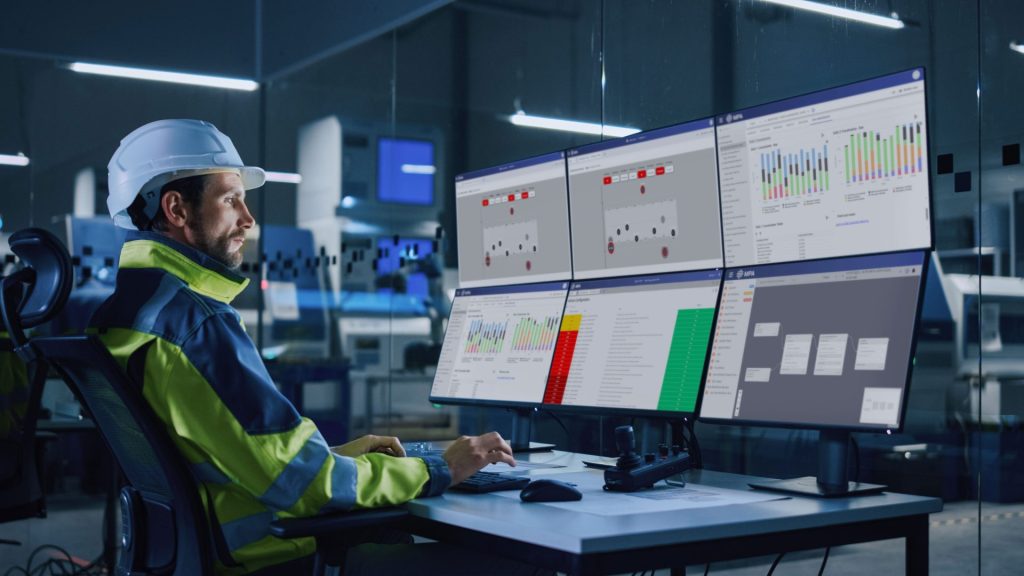
Machine learning
Like we said earlier, most mineral process plants will see the most gains from just getting the basics right. But more advanced sites that are already several years into their digitalisation program, there are some exciting technologies now available.
“We’ve worked in partnership with Aspentech to implement software called Mtell that takes in data such as vibrations and temperatures, collects data on that piece of equipment or utilises historical data from it over many months. Then the machine learning algorithm gets trained on all that data.
If you have good records of specific failures, you can pull it out of the database to make statements like, ‘We have these five faults. They’re all to do with the non-drive end bearing.’
You can input that into the predictive maintenance system instead of making generic predictions such as ‘The mill is likely to have a fault in two weeks’ time.’
“It can actually tell you that the Mill is likely to have a non-drive end bearing failure in two weeks’ time because the trends match a pattern that led up to that. There is a reasonable margin of error on the timelines but it can tell you specific failures from the data rather than a generic failure,” says Dan.
“And it can continuously learn.”
That’s a big deal for large, expensive equipment like mills and crushers because if one breaks down unexpectedly, that’s expensive.
Plan a 5-year digitalisation roadmap
Many of our clients approach these projects over a 3-5 year period. A gradual, staged transformation program is the way to go.
Here’s an example of a five-year roadmap to get there:
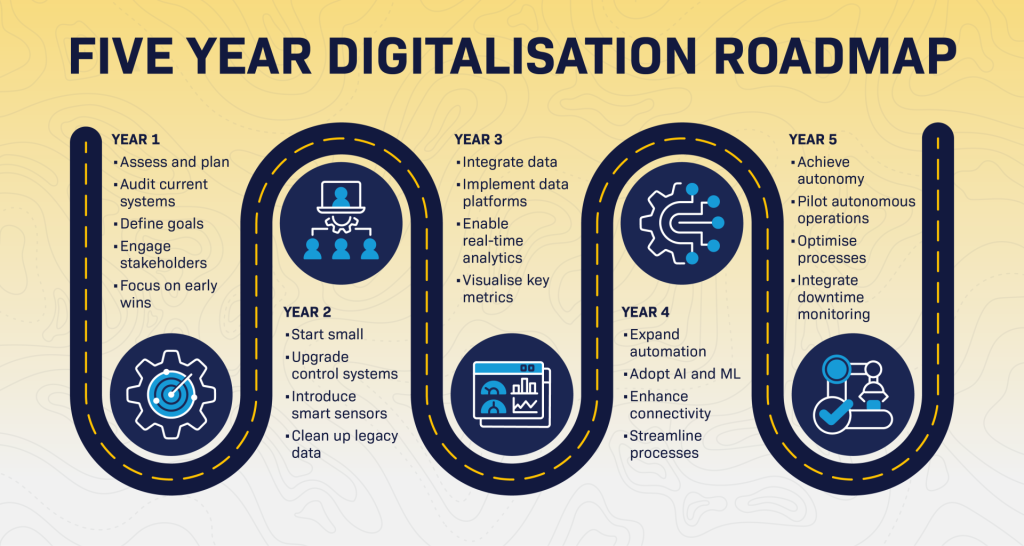
Year 1: Assess and plan
- Audit current systems: Understand existing capabilities and identify gaps.
- Define goals: Establish clear objectives aligned with business priorities.
- Engage stakeholders: Ensure buy-in from management, operations and IT/OT teams.
- Focus on early wins: Automate reporting to demonstrate value quickly.
Year 2: Start small
- Upgrade control systems: Implement advanced control loops and modern SCADA systems.
- Introduce smart sensors: Deploy IoT-enabled devices to collect high-quality data.
- Clean up legacy data: Remove outdated and inaccurate data from the system.
Year 3: Integrate data
- Implement data platforms: Consolidate information into a centralised system.
- Enable real-time analytics: Use dashboards for actionable insights.
- Visualise key metrics: Create user-friendly interfaces that allow teams to see performance against targets.
Year 4: Expand automation
- Adopt AI and ML: Apply machine learning for predictive maintenance and optimisation. Tools can detect patterns, such as bearing wear before failures occur.
- Enhance connectivity: Link equipment and systems to enable seamless communication.
- Streamline processes: Automate routine tasks like startup procedures or valve sequences.
Year 5: Achieve autonomy
- Pilot autonomous operations: Test AI-driven decision-making in specific areas.
- Optimise processes: Continuously refine workflows based on insights from data.
- Integrate downtime monitoring: Use advanced tools for transparent and real-time reporting.
Shift from reactive to proactive
The path to digitalisation requires vision, commitment, and patience. However, the long-term rewards—more throughput, less downtime, and a more profitable operation—make the journey worthwhile. By starting small and building incrementally, your process plant can achieve a level of digital maturity that ensures it remains competitive in 2025 and beyond.
Begin with a solid plan, focus on achievable milestones, and embrace the opportunities offered by digitalisation. The future of mineral processing is here—and it’s digital.
Read more about Mipac's products
Short Interval Control (SIC) has emerged as a powerful method to drive continuous improvement in mining operations. By enabling real-time decision-making and …
Shrey Gotri is a Control Systems Engineer at Mipac. In his 10+ year career, he has worked through the full life cycle …
The latest MPA update delivers performance enhancements, workflow improvements, and new features designed to streamline the builder experience and support client projects. …

